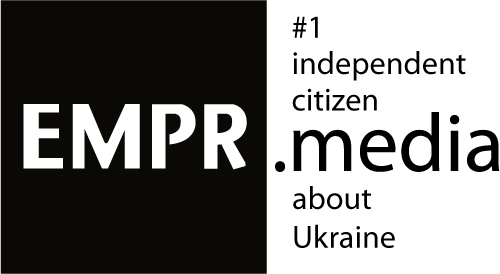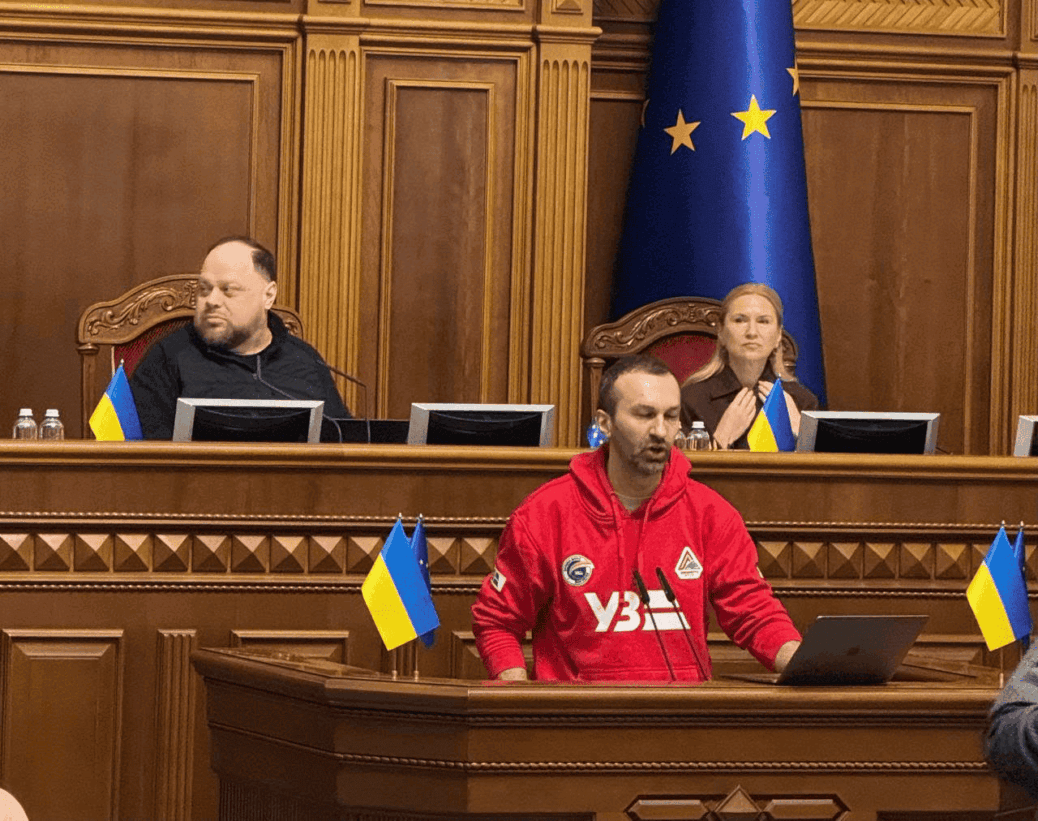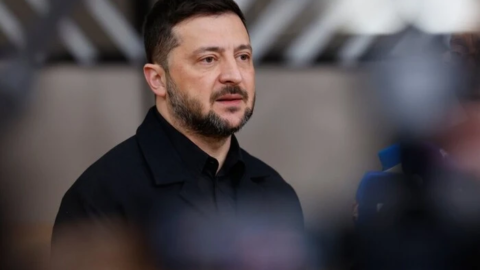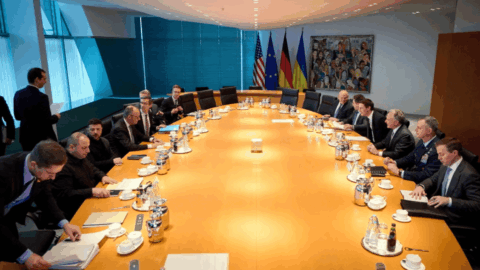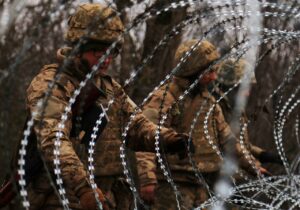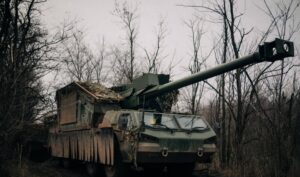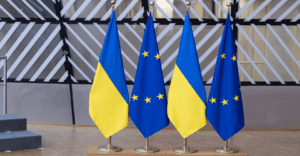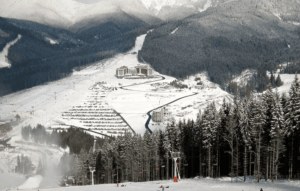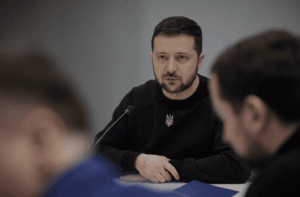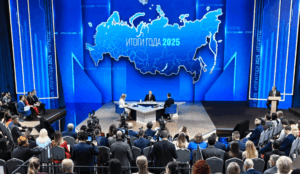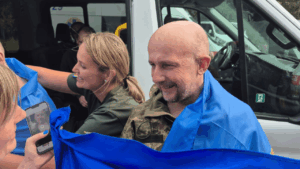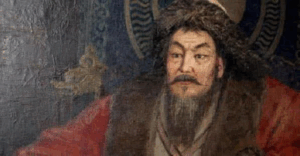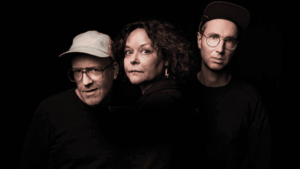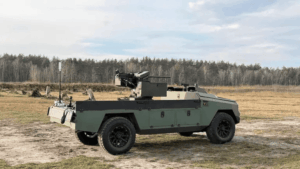Free 3000 km from Ukrzaliznytsia — a new symbol of absurd populism. The idea of Ukrzaliznytsia’s management to implement market pricing and a logical discount system has been turned by the President’s Office into “UZ-3000” — free rides for everyone. How did a reform become a PR campaign? Who twisted the project’s essence, and how much will it really cost taxpayers? Why is the state management system no longer able to say “no” even to the most absurd initiatives?
Ukrainian MP Yaroslav Zhelezniak reveals this in an investigative video on his YouTube channel.
“All the answers are in this video. I’m Yaroslav Zheleznyak, and this is my blog on the “Zaliznyy Nardep” channel. Join the discussion in the comments and don’t forget to subscribe so you don’t miss important updates.
So, as soon as Ukrainians stopped seeking consensus — which used to be the radio dictation — or stopped waiting for a new interview with Tihipko to start yet another argument, pardon me, on Facebook, then over the weekend, as you know, help came from where, frankly, we had been expecting it. And this help, for the new discussion that has been spreading through social networks for several days already, sounded roughly — or rather — exactly like this: “to develop a special transport support program for all Ukrainians. There is already a proposal from Ukrzaliznytsia — UZ 3000. 3000 kilometers so that everyone can choose railway routes within Ukraine for free: Lviv–Kyiv, Kyiv–Dnipro, any others — 3000 kilometers free of charge. The program is currently being worked out.”
And I am convinced that when the president recorded this video, he obviously did not expect such a result. So, for the next few days, either Ukrzaliznytsia or pro-government bloggers — and even pro-government bloggers officially connected to Ukrzaliznytsia, for example, as members of the supervisory board — tried to explain to people what was actually meant. And in this case, I also decided to figure out how our authorities even theoretically came up with the idea, which is, one way or another, called — and in fact, the president himself gave it a name — UZ 3000. And I will surprise you: the very first idea, or the first draft of the idea, was actually quite good. I would even say logical.
And if you look at the history of this situation, it is classic: when there are people earning million-level salaries, they propose, frankly, not the worst idea, bring it to the president’s office, and there, like King Midas but in reverse, everything they touch turns into… let’s call it biomass. And accordingly, we ended up with this UZ 3000 — free 3000 kilometers for everyone.
So, this is exactly about the metamorphosis of the idea — how it was originally planned, why it ended up the way it did, who changed it — and that will be our topic for today’s video. I’m convinced it will be interesting even for government representatives, because at the time the video was recorded, I assure you, the majority — or rather, all the “Servant of the People” deputies — still cannot understand what this program is and how to comment on it. They weren’t given a test, which might actually be a good thing — they could have said too much. So this video will be useful for them too.
This is Yaroslav Zheleznyak with you, this is the channel “Zaliznyy Nardep,” and we’re getting started.
So, let’s start with some basic fundamentals about Ukrzaliznytsia. Ukrzaliznytsia has historically been, for us, an enterprise that a) is being looted, and b) is unprofitable. There is no prospect of breaking out of this vicious circle.
How it works now: there are, roughly speaking, a few types of directions. Let’s take the two main ones: first, business transportation — basically, freight transport. Coal, for example, moves from one part of the country to another. And second, passenger transportation. And as it should be in communist-style states, for some reason here, business ends up financing this through passenger fares. Because of this, fares are low, but our trains and carriages are in poor condition, the tracks are also bad, and business constantly complains that it has to pay for all of this.
For a very long time, thanks to the work of financial-industrial groups, including the same group of Akhmetov, the tariffs for these transport services were also low. For example, there used to be a separate tariff for the same ore and everything else, which only worsened the situation. One way or another, with passenger transportation, there was never enough money for upgrading the rolling stock or for any other changes. And, in short, everything rolled into the situation we have now, where Ukrzaliznytsia is unprofitable, which, frankly speaking, makes it very different from other neighboring railways that are profitable.
During the full-scale war, due to a huge number of problems and the need to transport everything not by ships but by wagons or other means, Ukrainian businesses adapted and bought themselves their own wagons. And accordingly, as soon as the sea routes reopened, even the already poor business model of Ukrzaliznytsia regarding freight transport became even worse. In other words, Ukrzaliznytsia no longer received even a portion of the money needed to keep ticket prices for passenger transportation low and to somehow pay salaries.
So we ended up in a situation where its losses increased every year. In 2025, as I mentioned in my previous video, government officials came running with wide eyes, asking to save Ukrzaliznytsia. That’s why the “Servants” took 8 billion hryvnias from Kyiv to finance it from the reserve fund, which I even reported on my Telegram channel on October 23. For the next year, at least 25–30 billion hryvnias from the state budget will have to go to Ukrzaliznytsia. This will include, by the way, revenue from the bank tax, which will be increased.
So, this is about the current situation. And here, understanding all the problems and, frankly, all the shortcomings of such a system, the management of Ukrzaliznytsia — and I’ll be honest, I have a good opinion of Mr. Pertsovskyy. I don’t know him personally, maybe I’ve seen him at some reception, but I’ve heard, well, really good things about him. He comes in with a fairly logical idea, which, one way or another, is absolutely not new and, frankly, works all over the world, from bus transportation to airplanes, and of course in railways.
They propose a differentiated approach to pricing for passenger transportation at Ukrzaliznytsia. Let me explain more simply: if we are talking about peak demand — people traveling home for a holiday, for example, at Easter, and they want the most desirable carriage, the lower berth, the middle row of the carriage — obviously, that ticket should be significantly more expensive than an upper berth, closer to the front or back of the carriage. And obviously, for example, in February 2026, when the ticket is purchased in advance. This is how it works everywhere, from European railways to air travel.
And since a Ukrainian train costs more or less the same whether it’s full of passengers or empty — I mean, it will still consume roughly the same amount of diesel, it will still need the same number of conductors — there’s no economic sense in running empty trains. And similarly, there’s no logic in not incentivizing this kind of seat distribution, as airlines do all year round.
And with this idea, as far as I understand, the management of Ukrzaliznytsia either came to a meeting with the president or submitted it. And accordingly, they basically explained it further. Right now, I’ll show posts from Mr. Pertsovskyy himself. He is the head of Ukrzaliznytsia, and, one way or another, he tries to explain the theoretical logic behind these measures to us without criticizing the president’s office.
Basically, in the same way, Serhiy Leshchenko gives examples that there are trains with a huge number of empty seats, meaning the train will run half-empty, and then there are others that are completely full. And to balance this out, they proposed this system.
Next, I’ll show you, as the author intended. Because, to put it mildly, what the author wanted got twisted in the president’s office into this story about free distribution. So, the logic of Ukrzaliznytsia and the proposal they came with actually concerned the following: creating a differentiated approach to ticket pricing. If the state wants to make certain routes or tickets in general cheaper, the approach is the same as with gas — there should be a PSO.
A special obligation: the state says, “Here, Ukrzaliznytsia, 10 billion from the state budget so that you make all train ticket prices cheaper.” Well, let’s just say I won’t comment on the PSO, but overall, this is a conditionally normal, reasonable approach that could be accepted. I personally wouldn’t spend 10 billion on low ticket prices, but okay, if they want, they can do it.
And accordingly, here is exactly the confirmation of this point — I’ll show my personal correspondence with Mr. Pertsovskyy. It’s public, in the comments under his post, where he tries to explain this decision, and where I point out that all of this is fine, but there’s a problem: it’s being done at the expense of a) taxpayers, and b) increasing taxes accordingly. To put it mildly, we don’t accept this kind of approach.
And Mr. Pertsovskyy replied to me on Facebook with an explanation. I’ll read it to you now, because his reply contains, first and foremost, the logic that was later distorted in the president’s office. I’ll tell you more about this next.
“Yaroslav, greetings and thank you for your interest in the topic. And where exactly is it stated that everything is fine? It’s actually about the need — as is done in the vast majority of European countries — to finance passenger transportation. The first of the relevant laws on changing the railway market has been submitted to parliament. We will welcome support. But until a full system of such public PSO contracts is implemented, objectively, it will still take a long time, and people need to travel by train today.
In parallel with budget financing, during limited off-peak periods when seats are available, we are piloting this passenger support program. If trains are subsidized by the state, it’s important that they are used as efficiently as possible and filled to capacity during off-peak times.
Moreover, the key current request to Ukrzaliznytsia is seat availability during peak season. Doubling or tripling the number of train sets to fully meet demand quickly is unrealistic. We surveyed thousands of passengers, and over 40% are willing to travel and adjust to off-peak periods if there is a price incentive, and 9% are willing to choose their travel month if it’s significantly cheaper.
So, if we manage to shift demand from peak to less busy periods by 5–10%, this provides an additional opportunity to move another 5–10% of people into the peak. At the same time, we will launch several compensatory measures (we’ll explain everything) so as not to increase funding requirements. We welcome all proposals and are ready to discuss them in detail, but this is definitely not a ‘total disaster’ or ‘all is lost.’ Once again, thank you for your interest.” — Pertsovskyy.
And here he is right. Basically, probably, if you heard it correctly, he said the same thing I was saying. I won’t even argue.
So, with this idea, the management of Ukrzaliznytsia probably went to the president’s office. After that, the story is very simple. No one knows how this absolutely logical approach — with differentiated pricing and a reasonable method — got twisted. In fact, they could even have offered discounts for those traveling from occupied territories or visiting relatives when returning to front-line areas, accordingly back to Ukrzaliznytsia. I don’t think we would have criticized that at all.
So, once again, it was all logical, even clear with numbers and real surveys, because people would obviously agree to travel at off-peak times for a significantly lower price. And even with some transfers, just like with airplanes, routes could be combined, which would also bring in additional revenue.
It turned into just giving away money. And here’s the response: no one knows. Of all the options I’ve heard, they come down to something very simple: the president personally looked at this issue, heard about the 3000, and decided to propose it in the same way as Zelenskyy’s 1000 — all together — and then packaged it as obviously having to be free, because people would be upset that it’s already difficult and prices would go up.
So, in this case, it turned from an idea that was supposed to help a state-owned company survive and give us real access to tickets, and, frankly, in the future, to prevent our Ukrzaliznytsia from stopping, into damn populism.
And this story is a concrete example of how a politician, for the sake of ratings and to continue pleasing their citizens, turns a correct economic idea of a state-owned company into exactly this — what we heard.
And here I want to come back — I also wrote this on Facebook — that to prevent this from happening in the first place, we have a supervisory board that receives million-level salaries, management, the Ministry of Finance, the Ministry of Infrastructure, the prime minister, a bunch of presidential advisors, even the Ukrainian parliament, and maybe even the Accounting Chamber and the State Audit Service. But let’s be honest: none of these mechanisms work at all, because over the past six years the whole system has torn itself apart, and all those who could have said no, or said, “Well, this isn’t what Ukrzaliznytsia proposed,” were long ago dismissed. Everyone who remains understands perfectly well, based on the example of Kudrytskyi, what will happen if they suddenly start criticizing this.
So instead of a normal, reasonable idea with an economic foundation and even some logic, it turned into UZ 3000.
Basically, that’s it. There are no more details here. And if you wanted to hear something scarier — that there was some tricky calculation or focus groups — no. As far as I understand, it happened in a day and was packaged together with check-ups, cashbacks, and the 1000-hryvnia handout.
That’s how it is. During a full-scale war, in the fourth year, in the seventh year of governance, decisions are being made in our country. If you think this is only a problem of Ukrzaliznytsia, populism, or even the economic direction — no. I assure you, all other decisions are made more or less according to the same logic.
And with that, we’ll wrap up. Goodbye.”
To be honest, MP Zheleznyak spent a few days trying to figure out how the “UZ-3000” idea even came about.
There’s nothing sensational here, but it’s very telling. In fact, the version that was brought to the President’s Office was actually “okay.”
The railway, due to corruption (à la Shylo from the SBU), lobbying by industrial groups, and poor management, was brought to near bankruptcy. And so there were two reasonable ideas:
- Obtain a PSO for passenger transport
- Implement flexible pricing: peak dates and good seats – more expensive; low season and upper berths – cheaper.
Overall, a normal idea, that’s how the whole world works. Anyone who has bought train tickets in Europe has seen this.
But then this normal idea went to the President’s Office and turned into “3,000 km for everyone, for free.”
Quite a telling example, isn’t it?
As expected, in Parliament during the morning session today at 10:00, there was a speech by Yermak’s adviser and something from the Supervisory Board by Serhiy Leshchenko.
Key points from the speech:
- The railway needs saving;
- All railway resources are exhausted. The railway may stop soon;
- 49% of freight transport has been lost;
- We need help from Ukrainian taxpayers;
- 7.19 billion UAH net losses in 9 months;
- 16 billion UAH from the budget is needed to cover Ukrzaliznytsia’s losses;
- Freight tariffs need to be indexed (in two stages);
- This year the government wants to provide 13 billion UAH from the budget, next year 16 billion UAH;
- “Dynamic pricing” will be introduced for SV and first class;
- The freebie “UZ-3000” requires no expenditures.
